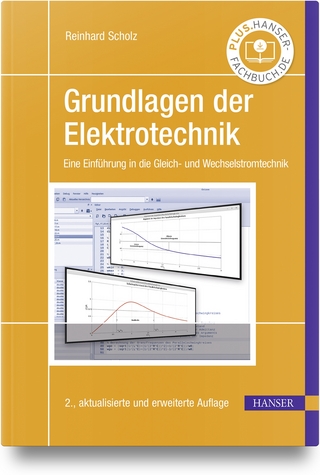
Hidden Attraction : The History and Mystery of Magnetism
Seiten
1993
Oxford University Press Inc (Verlag)
978-0-19-506488-9 (ISBN)
Oxford University Press Inc (Verlag)
978-0-19-506488-9 (ISBN)
- Titel ist leider vergriffen;
keine Neuauflage - Artikel merken
Designed for the general reader, this study of the phenomenon of magnetism begins with a look at the lodestone: "a magical object with the virtue to attract iron". It then examines pioneering experiments, theoretical formulations and the discovery of interstellar magnetic fields.
Long one of nature's most fascinating phenomena, magnetism was once the subject of many superstitions. Magnets were thought useful to thieves, effective as a love potion, or as a cure for gout or spasms. They could remove sorcery from women and put demons to flight and even reconcile married couples. It was said that a lodestone pickled in the salt of sucking fish had the power to attract gold. Today, these beliefs have been put aside, but magnetism is no less remarkable for our modern understanding of it. In Hidden Attraction, Gerrit L. Verschuur, a noted astronomer and National Book Award nominee for The Invisible Universe, traces the history of our fascination with magnetism, from the first discovery of magnets in Greece, to state-of-the-art theories that see magnetism as a basic force in the universe. The book begins with the early debunking of superstitions by Peter Peregrinus (Pierre de Maricourt), whom Roger Bacon hailed as one of the world's first experimental scientists (Peregrinus held that "experience rather than argument is the basis of certainty in science"). Verschuur discusses William Gilbert, who confronted the multitude of superstitions about lodestones in De Magnete, widely regarded as the first true work of modern science, in which Gilbert reported his greatest insight: that the earth itself was magnetic. We also meet Hans Christian Oersted, who demonstrated that an electric current could influence a magnet (Oersted did this for the first time during a public lecture) and Andre-Marie Ampere, who showed that a current actually produced magnetism. Verschuur also examines pioneering experiments and theoretical break-throughs of Faraday and Maxwell and Zeeman (whodemonstrated the relationship between light and magnetism), and he includes many lively stories of discovery, such as the use of frogs by Galvani and Volta, and Hertz's accidental discovery of radio waves. Along the way, we learn many interesting scientific facts, perhaps the most remar
Long one of nature's most fascinating phenomena, magnetism was once the subject of many superstitions. Magnets were thought useful to thieves, effective as a love potion, or as a cure for gout or spasms. They could remove sorcery from women and put demons to flight and even reconcile married couples. It was said that a lodestone pickled in the salt of sucking fish had the power to attract gold. Today, these beliefs have been put aside, but magnetism is no less remarkable for our modern understanding of it. In Hidden Attraction, Gerrit L. Verschuur, a noted astronomer and National Book Award nominee for The Invisible Universe, traces the history of our fascination with magnetism, from the first discovery of magnets in Greece, to state-of-the-art theories that see magnetism as a basic force in the universe. The book begins with the early debunking of superstitions by Peter Peregrinus (Pierre de Maricourt), whom Roger Bacon hailed as one of the world's first experimental scientists (Peregrinus held that "experience rather than argument is the basis of certainty in science"). Verschuur discusses William Gilbert, who confronted the multitude of superstitions about lodestones in De Magnete, widely regarded as the first true work of modern science, in which Gilbert reported his greatest insight: that the earth itself was magnetic. We also meet Hans Christian Oersted, who demonstrated that an electric current could influence a magnet (Oersted did this for the first time during a public lecture) and Andre-Marie Ampere, who showed that a current actually produced magnetism. Verschuur also examines pioneering experiments and theoretical break-throughs of Faraday and Maxwell and Zeeman (whodemonstrated the relationship between light and magnetism), and he includes many lively stories of discovery, such as the use of frogs by Galvani and Volta, and Hertz's accidental discovery of radio waves. Along the way, we learn many interesting scientific facts, perhaps the most remar
About the Author: Gerrit L. Verschuur is Research Professor of Astronomy at Rhodes College, Memphis, Tennessee, and contributing editor of Air and Space Magazine. He has written numerous popular science articles, as well as eight previous books.
Introduction. 1: Of mystery and magnets. 2: Clearing the debris. 3: On the magnetical philosophy. 4: Let the experimentation begin. 5: Oersted and Ampere: The birth of electromagnetism. 6: Michael Faraday: The era of discovery. 7: Fields and Faraday. 8: Maxwell sees the light. 9: Heinrich Hertz's grand adventure. 10: Curioser and curioser. 11: What if?. 12: Magnetic fields in space. 13: The spark that bridge the universe. 14: The era of creativity. Appendix: The pattern of progress
| Erscheint lt. Verlag | 25.3.1993 |
|---|---|
| Zusatzinfo | halftones, line figures, bibliography |
| Verlagsort | New York |
| Sprache | englisch |
| Themenwelt | Naturwissenschaften ► Physik / Astronomie ► Elektrodynamik |
| ISBN-10 | 0-19-506488-7 / 0195064887 |
| ISBN-13 | 978-0-19-506488-9 / 9780195064889 |
| Zustand | Neuware |
| Haben Sie eine Frage zum Produkt? |
Mehr entdecken
aus dem Bereich
aus dem Bereich
eine Einführung in die Gleich- und Wechselstromtechnik
Buch | Hardcover (2024)
Hanser (Verlag)
34,99 €
Grundlagen und praktische Anwendungen
Buch | Hardcover (2022)
Hanser (Verlag)
34,99 €


